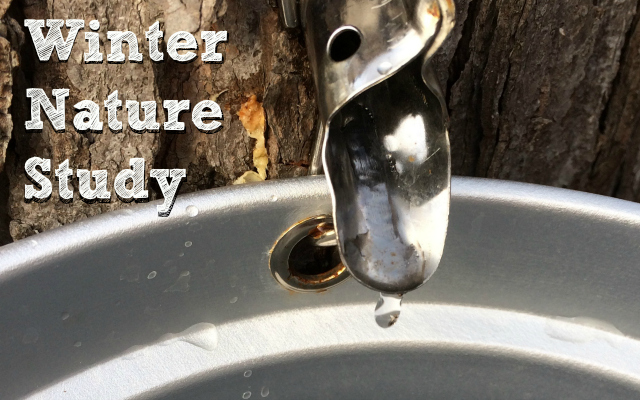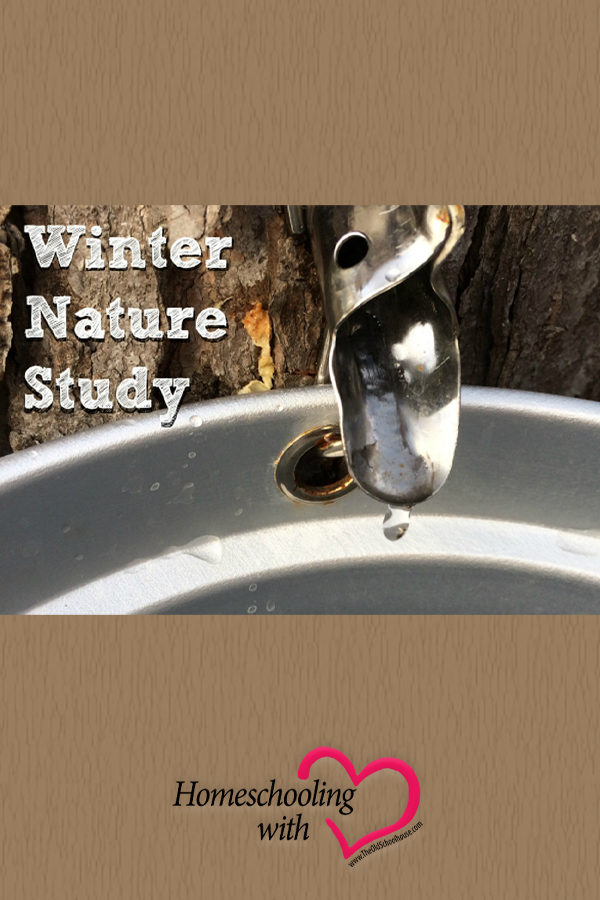Winter Nature Study


I was first formally introduced to Nature Study when I read Karen Andreola’s book A Charlotte Mason Companion almost 17 years ago. The idea that children learned from the natural world around them was not new to me, but how to encourage and direct them in that pursuit was. If you want a good, in-depth description of nature study, read Karen’s book.
For many homeschoolers, the idea of nature study is great, but they lack the time (or desire) to see it through. Nature study is a great way to spend an afternoon at any time of year, but we always found it a great way to pass away a cold winter afternoon. In our home, nature study was a natural progression in learning about something. It might start with a question from one of our girls, or from reading a library book. We would learn something, look at it, either in real life or in a book, and then the girls would record something about it in their nature notebooks.
I viewed nature study as an easy way to introduce science to our girls, and because they loved the gentle approach it offers, we used it for most of their science work all the way through high school. One of the benefits of homeschooling is being able to study science topics in the order you choose, not necessarily how they are presented in a traditional textbook.
If your children are still young, let me assure you that nature study is easy, and fun. Let me offer some suggestions to get you started on winter nature study. Read a book, or find an online article, about Snowflake Bentley. You can read about his life at www.snowflakebentley.com. There is a modern Canadian photographer named Don Komarechka who also photographs snowflakes. Arlene, now 18, first found his images a while ago on Flickr. She came and told me she had found a modern Snowflake Bentley.
Learning about people who photograph snowflakes can lead to all sorts of other wonderful winter nature ideas, like building snow forts, blowing frozen bubbles, cutting out paper snowflakes, or making snow ice cream. Nature study really is easy once you get started!
Have a need to stay inside? Cut open an apple across the middle (not top to bottom) and spend time looking at the star shape of the seeds in the core. Have your children draw a bowl full of apples in their nature notebooks, and then make a big pot of fresh, lumpy applesauce for an afternoon treat.

Do your children love to go tromping through the snow? Bundle them up and go outside to observe the evergreen trees in your neighborhood. Compare and contrast then to the deciduous trees, and then when you get back inside, look up why some trees drop their leaves and others don’t. This can lead to a discussion on one of our favorite winter nature study activities: maple syrup making! You can order your own tree tapping kit, or look online for local maple syrup festivals that will be happening in February or March all across the northeastern third of the USA and a lot of Canada. We only have one reliable maple tree in our yard to tap, so we mostly do it for the fun of it. Then we travel about 45 minutes away to a fairly large maple syrup camp and buy jugs and jugs worth of sweet maple syrup from them.
My husband’s favorite winter nature study pastime is bird-watching. You can be as casual or as involved in this activity as you want. Many families enjoy putting up a bird feeder outside their window and watching the songbirds come to eat. Want a wider variety? Add in a suet feeder and attract woodpeckers and blue jays. Draw pictures, talk about birds, look through bird books, incorporating nature study into your weekly routine is really not as hard as you thought it might be! We’ve gone beyond basic backyard birding in the past few years and now regularly go on winter hikes and drives just to spot birds. We like watching the Sandhill cranes migrate every fall and the white pelicans fly through Indiana in the spring, but Kurt’s favorite is spotting bald eagles! We have located a few nesting pairs of eagles within an hour of our house, and we also choose to attend at least one DNR sponsored eagle watching event each winter.
So mom, and dad, get your children, and yourself, involved with nature study. It is fun for any age, and can be done at home or away. Pretty soon instead of watching highway signs for the nearest bathroom, your kids will be spotting hawks perched on top of them as you drive merrily down the road on your next adventure!
Carol and her husband Kurt are in their 15th year of home education. With one graduate and one high school senior, Carol writes with a practical look at the whole journey of home education. Focusing on experienced based education and frugal ways to teach and learn well, Carol offers encouragement that anyone, even working moms, can homeschool successfully. Carol writes for her local newspaper, the TOS Homeschool Review Crew, and reviews books for several Christian Publishers. You can find her love of nature, field trips, and lifelong learning on her blog: Home Sweet Life.











































